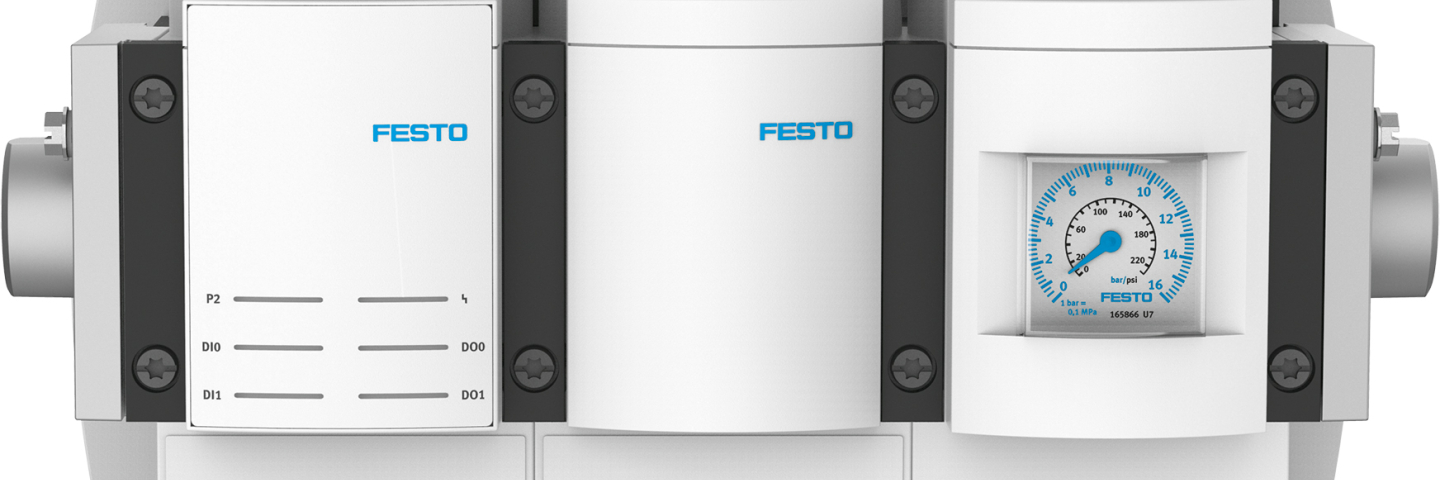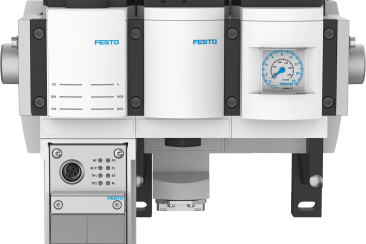
Meeting the CO2 specifications of industrial customers and saving money
The energy efficiency module MSE6-C2M from Festo is a global pioneer in monitoring compressed air consumption and supply, automatically detecting leaks as well as the speed of return on investment. This ensures that machines and systems are always available.
Reducing compressed air consumption
When it comes to condition monitoring in compressed air systems, the energy efficiency module not only enables measurement data to be gathered and analysed, but it can also automatically reduce consumption by actively intervening in the supply. Thanks to patented technology from Festo, users can save up to 3.2 metric tons of CO2 and hundreds of euros in operating costs per year, as revealed by calculations and tests.
The energy efficiency module MSE6-C2M combines pressure regulator, on/off valve, sensors and fieldbus communication in one intelligent unit. It monitors the compressed air consumption, shuts off the compressed air after production has stopped for a certain amount of time, and simultaneously prevents the system pressure from falling below a specific stand-by pressure level. This works in a similar way to the automatic stop/start system in a modern car so that no more energy is wasted.
Ready for Industry 4.0
The lower pressure level saves energy, without completely depressurising the system. This means that machines and systems are permanently available. The MSE6-C2M can automatically detect leakages occurring over time and reports these to a controller. It can be fully integrated into the machine network via PROFINET. All measured values such as pressure, flow rate or system parameters are available in the PLC or cloud and can be displayed or individually further processed.
All values in view
Measured values for flow rate, air consumption and pressure can be called up at any time. System operators can use this information as the basis for continuous intelligent energy monitoring of a machine. With the MSE6-C2M it is possible, for example, to determine whether a system is consuming more air now than a year ago, how much compressed air is needed for a production batch, whether the pressure is correctly adjusted or how high the pressure and flow rate were at the time of a machine failure.


